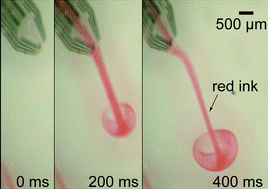Parylene flexible neural probes integrated with microfluidic channels
Abstract
The fluidic channel in the flexible probe has three functions: (i) to inject chemicals into the tissues, (ii) to measure the neural activities from the tissues, and (iii) to improve the mechanical stiffness of the probe by filling the channel with a solid material. A 10-µm-thick microfluidic channel was embedded into the probe by using sacrificial photoresist patterns. Polyethylene glycol (PEG), which is solid at room temperature and dissolves when in contact with


 Please wait while we load your content...
Please wait while we load your content...